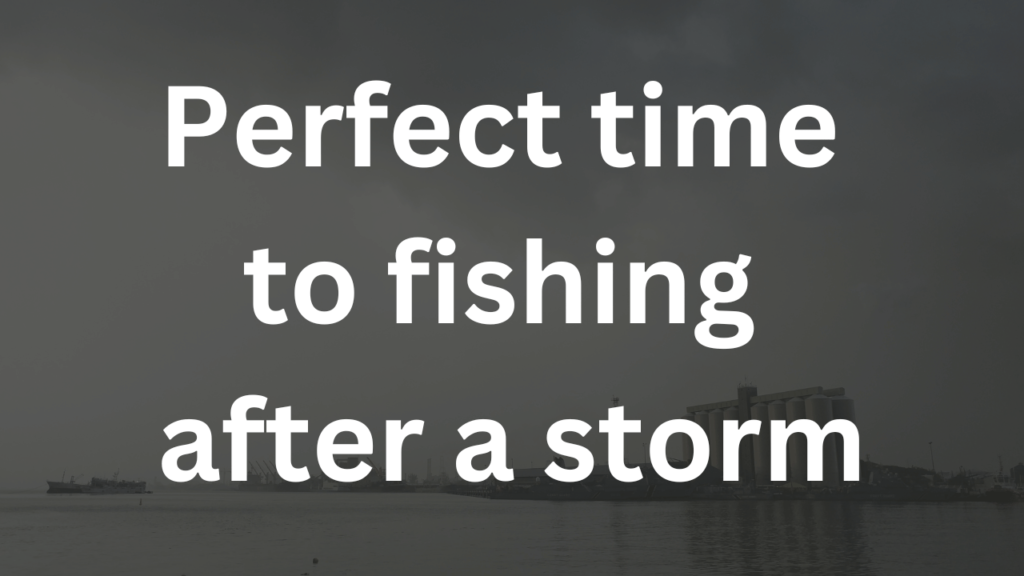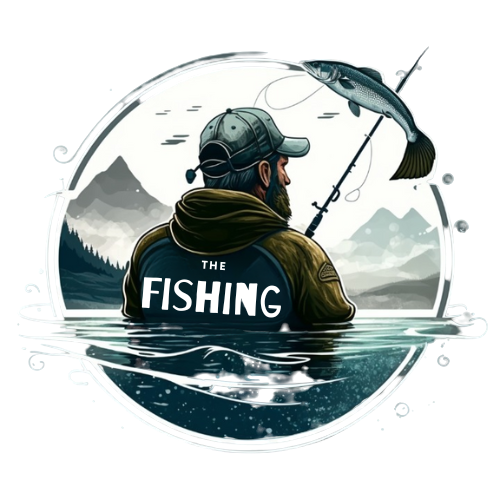After a powerful storm unleashes its fury upon the waters, anglers are left wondering, “Is fishing good after a storm?”
While storms may disrupt the serene tranquility of the fishing experience, they also offer a unique opportunity for anglers seeking an exhilarating and fruitful adventure.
In this article, I will explore the aftermath of a storm and discover the secrets that lie beneath the surface of the water.

Table of Contents
- Is Fishing Good After a Storm?
- What is the perfect time to fishing after a storm?
- What you can Expect When Fishing After a Storm
- How Storms Affect Fishing Conditions
- How Storms Affect Fish Behavior
- The Role of Barometric Pressure in Fish Activity
- The Impact of Water Temperature and Oxygen Levels
- Bass Fishing After a Storm
- Is it Good to Fish After a Storm in Saltwater?
- FAQs
- Conclusion
Is Fishing Good After a Storm?
Fishing after a storm can be productive as fish often feed aggressively due to increased food supply from storm runoff. However, success depends on the storm’s severity and water clarity.
Just as weather conditions significantly influence our activities and moods, they also impact fish behavior. Contrary to what some might think, the changes brought about by a storm can affect fish in remarkable ways.
What is the perfect time to fishing after a storm?
Fishing after a storm can be fruitful as fish become more active once the storm has passed and the water calms.

While fish behavior changes due to the shift in air and water pressure, making them less active and stay closer to the bottom, they start becoming more active around 12 to 72 hours after the storm, when the atmospheric pressure stabilizes. Therefore, waiting for about one or two days after a storm and ensuring safety precautions could provide optimal fishing conditions
What you can Expect When Fishing After a Storm
Fishing after a storm can be a unique experience. The storm’s aftermath can significantly influence the behavior of fish, often leading to increased activity due to changes in water conditions and food availability.
For example, storms can cause fish to evacuate nearshore estuaries and coastal ocean environments towards deeper water. This behavior was observed in a study on gray triggerfish, where the fish quickly evacuated a 120-foot deep study area in the direction of even deeper water as a storm approached. After the storm passed, many of the fish returned to the study area and resumed normal swimming behavior.
How Storms Affect Fishing Conditions
Storms can have a profound impact on fishing conditions. They can alter water temperature, oxygen levels, and visibility, all of which can influence fish behavior.
For example, heavy rain can lead to increased runoff, introducing more nutrients and potentially attracting fish. On the other hand, storms can also lead to rough water conditions, making fishing more challenging.
How Storms Affect Fish Behavior
A storm does not merely pass over a body of water without leaving an imprint on its residents. The aquatic environment undergoes multiple changes, all of which can significantly influence fish behavior. But, how exactly does this happen?
Storms bring about changes in barometric pressure, temperature, and oxygen levels in the water, all of which affect fish behavior. For instance, falling barometric pressure often triggers a feeding frenzy in fish, making them more active.
Similarly, storm-induced water churning can mix oxygen-rich surface water with deeper layers, enabling fish to inhabit zones they might usually avoid. The sudden drop in water temperature caused by heavy rainfall also tends to make fish more active.
However, it’s important to remember that fish reactions to these changes can be species-specific and influenced by other factors like the severity of the storm.
The Role of Barometric Pressure in Fish Activity
Barometric pressure, or the weight of the air, has a profound effect on fish. According to the U.S. Geological Survey, fish are extremely sensitive to changes in pressure.
When a storm approaches, the atmospheric pressure begins to drop, prompting fish to become more active and feed heavily in anticipation of the oncoming bad weather. This frenzy usually lasts until the storm hits, and the barometric pressure falls rapidly.
For further insights about the relationship between fishing and weather, Weather Patterns from NOAA’s National Weather Service can be an excellent resource.

The Impact of Water Temperature and Oxygen Levels
Apart from barometric pressure, water temperature and oxygen levels also fluctuate during and after a storm. Storms often lead to cooler water temperatures due to rain and reduced sunlight, making it more comfortable for fish to feed in warmer climates.
Moreover, the agitation from raindrops increases the oxygen content in water. This higher oxygen level can stimulate fish to become more active, making them more likely to take your bait.
However, the effect of water temperature and oxygen levels largely depends on the intensity of the storm and the characteristics of the body of water.
When it comes to understanding the effect of water conditions on fishing, You can check U.S. Geological Survey’s Water Data
By this point, you must have realized that storms can have a profound impact on fish behavior. However, it’s also essential to consider the different phases of a storm: before, during, and after, as they each come with unique characteristics.
Bass Fishing After a Storm
Bass, in particular, can be quite active after a storm. The change in barometric pressure, coupled with the influx of fresh water and potential food sources, can stimulate feeding behavior.
It’s important to note that each bass species may react differently to post-storm conditions. Understanding the behavior of the specific type of bass you’re targeting can greatly enhance your success.
Is it Good to Fish After a Storm in Saltwater?
Yes, Fishing after a storm in saltwater. Saltwater fishing after a storm can be both challenging and rewarding. Storms can churn up the sea, bringing baitfish and other prey species closer to the surface and making them more accessible to larger fish. This can lead to a feeding frenzy, providing excellent fishing opportunities.
FAQs
Storms and fishing have a complex relationship. Here, I will answer some of the most frequently asked questions on this topic to clear any lingering doubts you might have.
Is Fishing Good Right After A Storm?
As mentioned in the previous section, fishing can indeed be good right after a storm, especially following a mild one. However, the fish’s feeding behavior largely depends on how drastically their environment has changed due to the storm.
For more details on this, you can read our article on Is Fishing Good After a Hurricane.
Are Fish More Active After A Storm?
Fish can be more active after a storm due to the increased amount of food available in the water from storm runoff. If the storm is too severe and significantly alters the fish’s habitat, it might take some time for the fish to adapt and resume their regular feeding patterns.
Is Fishing Good After A Rainstorm?
Fishing after a rainstorm can be excellent due to the overcast conditions and cooler water temperatures. The rain can also wash insects and other potential food sources into the water, triggering a feeding frenzy among fish.
Check out our article Is Trout Fishing Good in the Rain for more insights on this topic.
Do Fish Bite Well During A Storm?
Fishing during a storm is not typically recommended due to safety concerns. However, before a storm, when the pressure starts to drop, fish tend to feed aggressively, and you might experience excellent fishing.
Conclusion
The question, “Is Fishing Good After a Storm?” doesn’t have a definitive yes or no answer. The impact of a storm on fishing conditions and fish behavior depends on numerous factors like the severity of the storm, water clarity, water temperature, and how much the storm has disturbed the aquatic environment.
However, understanding the dynamics of fish behavior during and after a storm can significantly improve your success rate. Remember that storms can also create dangerous conditions, so always prioritize your safety above everything else.
I hope this comprehensive guide has provided some insights into how storms impact fishing. We encourage you to share your own experiences and fishing stories around stormy weather in the comments below.
Remember, fishing isn’t just a sport or a hobby—it’s an adventure that teaches us patience, respect for nature, and appreciation of the subtle complexities of the aquatic ecosystem.
If you're new to fishing or want to learn more about it, feel free to explore our other blog posts. From understanding How Much a Fishing License Costs to deciding whether Fly Fishing Hurts Fish, you will find an array of topics to enrich your fishing knowledge.
